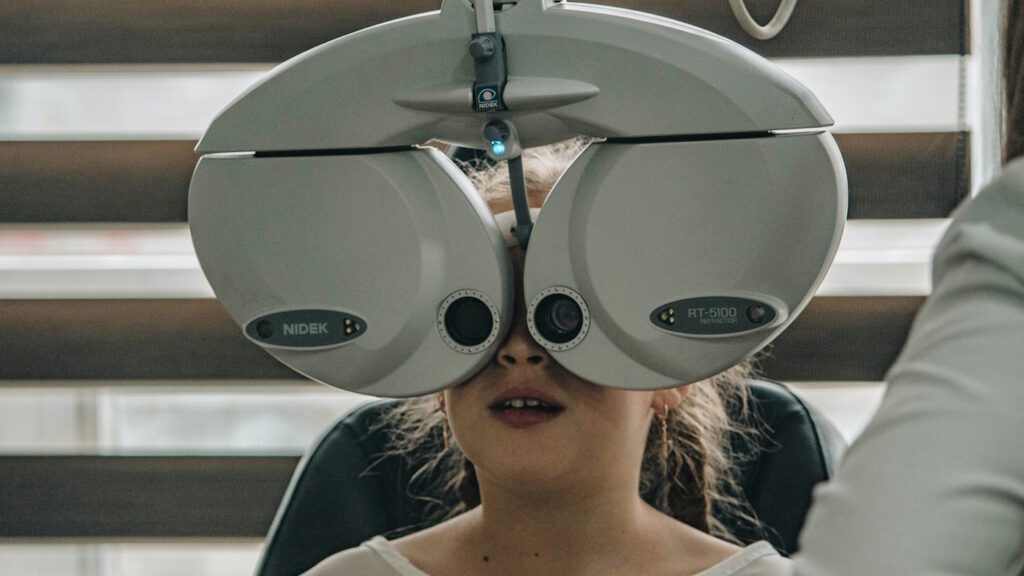September has come and gone, which means another school year is underway and the kids are back off to school. At school, your kids’ eyes will be put to the test and relied upon for the majority of learning time. For kids, their vision is one of the most important factors for learning and development.
It’s a busy time of year, but if you haven’t already this year, it’s time to visit your local optometrist for a comprehensive eye exam. In this article, we’re going to explain why it’s so important for kids to have their eyes tested this time of year, along with some common issues and risks kids are faced with.
Eye Exams for Children
While eye exams are important for everyone, regardless of age, it’s extra important to make frequent trips to the eye doctor with your child. There are a couple reasons for this.
To start, kids are learning new things and developing their brains at an incredibly fast pace – way quicker than you and I. On a regular school day, there’s so much to learn and so much to miss out on. And the eyes facilitate all that development. Especially at younger ages, kids learn with their eyes, so even a minor vision issue can be detrimental to their development.
The other reason you need to force the issue as a parent and take your kid in for eye exams proactively is because they might not be able to communicate any issues. Kids may not notice vision problems as quickly, and if their vision starts degrading gradually, they may not notice at all.
That’s why it’s recommended to take kids to the optometrist at least once per year. Plus, annual eye exams for kids under 18 years old are 100% covered by Medical Services Plan (MSP).
Having Trouble with Reading?

Roughly 80% of everything we learn is attributed to site. Knowing this, it goes without saying that your child will experience trouble reading if their eyesight is causing issues.
When it comes to reading, many of the common issues that children face are slightly different than what an adult might experience. It isn’t as simple as just getting blurry vision. For kids, their eyes are still learning to focus on objects up close and work with each other to see. If the eyes aren’t working together perfectly, the message being sent to the brain can get a little distorted. This is called binocular vision.
Binocular Vision
There are 3 different kinds of binocular vision. Convergence insufficiency is when the eyes are unable to focus properly at close distances, which causes double vision. Convergence insufficiency happens when the eyes are unable to work together when reading things up close. And oculomotor dysfunction is when the eyes aren’t able to track or coordinate together when reading across a page.
Binocular vision is a serious issue that can have a real impact on kids’ learning and development. One of the reasons it’s so dangerous is because kids will not necessarily notice a vision issue – they may be able to see just fine, they just can’t read. In a 2018 study from the University of Waterloo, it was found that 75% of kids had great eyesight, but more than a third of the group scored ‘below normal’ for binocular vision.
Other Eye Issues

Besides binocular vision, there are other common eye issues that affect kids. Glaucoma is one of those conditions that young children are more likely to suffer from. Glaucoma is a group of eye diseases that can lead to vision loss and even blindness, caused by a damaged optic nerve. For children, Glaucoma is also one of those conditions that can be present with zero symptoms, making it extremely important to screen for this issue early and often.
Myopia is another common eye issue to watch for in children. Also known as nearsightedness, Myopia provides difficulty when trying to see things farther away – like a chalkboard or whiteboard at the front of class. Myopia is always a risk for children because it’s an issue that worsens over time, which could eventually lead to vision problems if not treated.
Prescriptions & Contacts for Kids

By taking your child into the eye doctor for regular examinations, your optometrist will have all the information they need to prescribe a solution and nip issues in the bud. Eye exams for kids will screen for Binocular Vision, Glaucoma, Myopia, and other common issues.
From there, your optometrist will be able to develop a prescription for your child (if necessary), fit them with correct lenses and eyewear, and even fit them for kids’ contact lenses.
These days, roughly 1 in 7 kids under the age of 17 wear contact lenses. When you consider how active and prone to accident kids can be, it just makes sense. The only thing to be mindful of is hygiene. If your kid isn’t old enough to be diligent about frequent handwashing and caring for contacts, you’ll need to help them stay on the ball.
How Often Should Kids Visit the Eye Doctor?
Healthy adults can get away with skipping a year at the eye doctor, but kids can’t. It’s vital to get your kid’s eyes checked before they turn 1 year old, so the optometrist can spot any early issues. Once they’re passed 6 months of age, kids should come in for eye exams once per year. When they become adults, eye doctor visits every 1-2 years is recommended.
Ready to book an eye exam? Dr. Sharma and the optometrists at Inner Harbour Optometry have been serving patients in Victoria for over 10 years. We’ve got two offices downtown, so feel free to drop by on Douglas or Cook Street, or fill out our online booking form.
